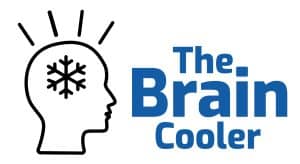 The impact of heat on athletic performance is a critical consideration for endurance athletes, team sports players, and anyone who pushes their physical limits in warm or hot environments. Extreme heat can place immense strain on the body’s thermoregulatory system, leading to dehydration, hyperthermia, and a host of other physiological challenges that can dramatically undermine an athlete’s capabilities. Understanding the mechanisms behind heat-induced performance decrements and implementing effective mitigation strategies is essential for maintaining peak performance in the face of environmental stressors.
The impact of heat on athletic performance is a critical consideration for endurance athletes, team sports players, and anyone who pushes their physical limits in warm or hot environments. Extreme heat can place immense strain on the body’s thermoregulatory system, leading to dehydration, hyperthermia, and a host of other physiological challenges that can dramatically undermine an athlete’s capabilities. Understanding the mechanisms behind heat-induced performance decrements and implementing effective mitigation strategies is essential for maintaining peak performance in the face of environmental stressors.
The Physiological Impacts of Heat Stress
At the core of heat’s detrimental effects on exercise is its influence on the body’s core temperature regulation. As the ambient temperature rises, the body must work harder to dissipate the excess heat generated by intense physical activity. This increased thermoregulatory demand diverts blood flow away from the working muscles, compromising oxygen and nutrient delivery. Additionally, the body’s reliance on anaerobic energy pathways increases, leading to a more rapid depletion of muscle glycogen stores.
Dehydration further exacerbates these issues, as fluid losses through sweating impair cardiovascular function and metabolic efficiency. Studies have shown that as little as a 2% loss in body weight due to dehydration can significantly impair VO2max and aerobic performance. The combination of elevated core temperature and dehydration can also contribute to neuromuscular fatigue, increasing the risk of cramps, muscle weakness, and reduced coordination.
The Performance Impacts Across Endurance Sports
The detrimental effects of heat stress on athletic performance have been well-documented across a variety of endurance disciplines. In marathon running, for example, research has shown that a rise in ambient temperature from 10°C to 25°C can result in a 2-3 minute decrease in elite runners’ performance times. The impact is even more pronounced in ultramarathon and trail running events, where a shift from cooler to hotter conditions can lead to an 8% or more decrease in finishing times.
Similar trends have been observed in cycling, where lab studies have demonstrated a 6.5% reduction in power output and increased blood lactate levels when athletes perform in 32°C conditions compared to 23°C. The cardiovascular strain of exercising in the heat appears to be a primary driver of these performance decrements, with athletes experiencing higher heart rates and perceived exertion despite producing less power.
The Importance of Heat Acclimation
Given the substantial performance impacts of heat stress, it is clear that effective preparation and adaptation strategies are essential for athletes competing in warm or hot environments. Heat acclimation, a process of gradually exposing the body to elevated temperatures, has been shown to be a highly effective intervention for mitigating the negative effects of heat on athletic performance.
Research from the 2019 IAAF World Championships and the 2022 World Race Walking Team Championships has demonstrated that athletes who undertook heat acclimation protocols prior to competition were able to outperform those who did not, and experienced fewer heat-related medical issues. The physiological adaptations induced by heat acclimation, such as increased sweat rate, expanded plasma volume, and improved cardiovascular function, allow the body to more efficiently dissipate heat and maintain performance in hot conditions.
Implementing an Effective Heat Acclimation Protocol
Optimal heat acclimation protocols typically involve a 10-14 day period of exposure to elevated temperatures, either through training in a hot environment or using environmental chambers. During this time, athletes should gradually increase the duration and intensity of their workouts, while closely monitoring their hydration status and physiological responses.
It is important to note that the specific parameters of a heat acclimation program, such as the target temperature, humidity, and exercise intensity, should be tailored to the individual athlete and the environmental conditions they will be facing in competition. Consulting with sports medicine professionals and experienced coaches can help ensure that the acclimation process is safe, effective, and aligned with the athlete’s specific needs and goals.
Hydration and Cooling Strategies
In addition to heat acclimation, maintaining proper hydration and implementing effective cooling strategies are critical for mitigating the negative impacts of heat stress on athletic performance. Athletes should aim to replace fluid losses through sweating by consuming water or electrolyte-rich beverages before, during, and after exercise in the heat.
Cooling interventions, such as the use of ice vests, cold water immersion, or even simply wearing light, breathable clothing, can help lower the body’s core temperature and improve cardiovascular function during exercise in the heat. These strategies can be particularly beneficial for athletes who are unable to fully acclimate to the environmental conditions prior to competition.
Cognitive Impacts and Mitigation
While the majority of research on heat’s effects on athletes has focused on physical performance, it is important to also consider the impact of heat stress on cognitive function. Prolonged periods of demanding cognitive activity, such as decision-making in team sports, can be significantly impaired by hyperthermia and dehydration.
Experimental studies have suggested an inverted U-shaped relationship between core body temperature and cognitive performance, with optimal function occurring at around 38.5°C. Interventions that help slow or blunt thermal loads, such as cooling strategies, may be effective in preserving cognitive abilities during heat stress.
Individualized Approaches and Monitoring
It is important to recognize that the physiological and performance impacts of heat stress can vary significantly between individuals, depending on factors such as fitness level, acclimation status, and genetic predisposition. Careful monitoring of an athlete’s responses to heat, including core temperature, heart rate, and perceived exertion, can help inform personalized strategies for mitigating heat-related issues.
Regular assessment of an athlete’s hydration status, through methods like urine color monitoring or body weight tracking, can also provide valuable insights into their individual needs and guide appropriate fluid intake and replacement strategies.
Considerations for Team Sports
In team sports, where the performance of one athlete can impact the entire squad, the effects of heat stress on individual players can have far-reaching consequences. Even a single player struggling with the heat can negatively affect the team’s overall cohesion, decision-making, and physical execution.
As such, it is crucial for coaches and support staff to ensure that all team members are properly prepared for the environmental conditions they will face. This may involve implementing comprehensive heat acclimation protocols, developing individualized hydration and cooling plans, and closely monitoring players’ physiological responses throughout training and competition.
The Role of Sports Medicine Professionals
Sports medicine professionals, including physicians, athletic trainers, and exercise physiologists, play a vital role in helping athletes navigate the challenges of competing in the heat. These experts can provide guidance on the development and implementation of heat acclimation protocols, advise on appropriate cooling and hydration strategies, and monitor athletes’ health and performance throughout the training and competition process.
By collaborating closely with athletes, coaches, and support staff, sports medicine professionals can help ensure that heat-related risks are effectively mitigated and that athletes are able to perform at their best, even in the most demanding environmental conditions.
The Brain Cooler Helps Protect Athletes Who Play Outdoors in the Heat
Safeguarding an athlete’s cranial health is paramount when playing contact sports where there is a risk of head injuries. The Brain Protector provides protection from contact and heat.
> Buy Now
The impact of heat stress on athletic performance is a complex and multifaceted challenge that requires a comprehensive, evidence-based approach. By understanding the physiological mechanisms underlying heat’s detrimental effects, implementing effective heat acclimation and cooling strategies, and leveraging the expertise of sports medicine professionals, athletes can overcome the obstacles posed by extreme environmental conditions and achieve their full potential.
Contact Us for More Information
Buy Now
—
 About Brain Cooler
About Brain Cooler
Safeguarding an athlete’s cranial health is paramount when playing contact sports where there is a risk of head injuries. The Brain Protector provides protection from contact and heat.
> Learn More
> Buy Now

 About Brain Cooler
About Brain Cooler